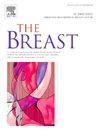Influence of surgical timing post-neoadjuvant chemotherapy on survival outcomes in breast cancer patients: A comprehensive systematic review and meta-analysis
IF 7.9
2区 医学
Q1 OBSTETRICS & GYNECOLOGY
引用次数: 0
Abstract
Background
Increasing evidence supports the use of neoadjuvant chemotherapy (NAC) prior to surgery for breast cancer. However, the optimal timing between NAC and surgery had yet to be fully elucidated. This meta-analysis aims to assess how the optimal interval time (OTT) between NAC and surgery affects outcomes in breast cancer, providing additional evidence for clinical practice and future research.
Methods
PubMed, Web of Science and Cochrane Library databases in English were systematically searched for this systematic review. All included studies investigated the variations in surgical timing following NAC and their effects on breast cancer outcomes. The endpoints included the rate of pathological complete response (pCR), overall survival (OS), recurrence free survival (RFS), and disease-free survival (DFS). This study has been registered with PROSPERQ.
Results
Eleven eligible studies were identified, encompassing a total of 10,834 cases, all of which received surgery post-NAC. All studies were retrospective in nature. Ultimately, compared to intervals within 4 weeks, patients who underwent surgery>8weeks post-NAC demonstrated a statistically significant worse OS (HR = 1.21, 95 % CI: 1.06–1.40, p = 0.333 for heterogeneity). No significant difference of OS was observed between patients with OTT of 4–8 weeks vs < 4 weeks. Notably, patients with an OTT of 4–8 weeks (HR = 1.18, 95 % CI: 1.10–1.26, I2 = 0.0 %, p = 0.931 for heterogeneity) and>8weeks (HR = 1.21, 95 % CI: 1.13–1.29, I2 = 36.2 %, p = 0.195 for heterogeneity) exhibited decreasing RFS, compared with those with OTTs of<4 weeks. DFS and pCR rates were similar in>8weeks vs < 4 weeks and 4–8weeks vs < 4 weeks.
Conclusion
Our systematic review and meta-analysis indicate that the optimal interval following NAC for breast cancer patients might be within four weeks, as delays exceeding eight weeks could be associated with poorer clinical outcomes. However, additional research is necessary to validate these preliminary findings.
手术时机对乳腺癌患者新辅助化疗后生存结局的影响:一项全面的系统回顾和荟萃分析
背景:越来越多的证据支持乳腺癌手术前使用新辅助化疗(NAC)。然而,NAC和手术之间的最佳时机尚未完全阐明。本荟萃分析旨在评估NAC和手术之间的最佳间隔时间(OTT)如何影响乳腺癌的预后,为临床实践和未来的研究提供额外的证据。方法系统检索英文版spubmed、Web of Science和Cochrane Library数据库。所有纳入的研究都调查了NAC术后手术时机的变化及其对乳腺癌预后的影响。终点包括病理完全缓解率(pCR)、总生存期(OS)、无复发生存期(RFS)和无病生存期(DFS)。该研究已在PROSPERQ注册。结果共纳入10834例nac术后患者,共纳入6项符合条件的研究。所有的研究都是回顾性的。最终,与4周内的间隔时间相比,nac后8周接受手术的患者表现出具有统计学意义的更差的OS (HR = 1.21, 95% CI: 1.06-1.40,异质性p = 0.333)。4-8周OTT患者与lt患者的OS无显著差异;4周。值得注意的是,与OTTs为4周的患者相比,OTTs为4 - 8周(HR = 1.18, 95% CI: 1.10-1.26, I2 = 0.0%, p = 0.931,异质性)和8周(HR = 1.21, 95% CI: 1.13-1.29, I2 = 36.2%, p = 0.195,异质性)的患者RFS下降。DFS和pCR率在8周内与8周时相似。4周和4 - 8周vs <;4周。我们的系统回顾和荟萃分析表明,乳腺癌患者NAC的最佳间隔时间可能在四周内,因为延迟超过8周可能与较差的临床结果相关。然而,需要进一步的研究来验证这些初步发现。
本文章由计算机程序翻译,如有差异,请以英文原文为准。
求助全文
约1分钟内获得全文
求助全文
来源期刊

Breast
医学-妇产科学
CiteScore
8.70
自引率
2.60%
发文量
165
审稿时长
59 days
期刊介绍:
The Breast is an international, multidisciplinary journal for researchers and clinicians, which focuses on translational and clinical research for the advancement of breast cancer prevention, diagnosis and treatment of all stages.
 求助内容:
求助内容: 应助结果提醒方式:
应助结果提醒方式:


